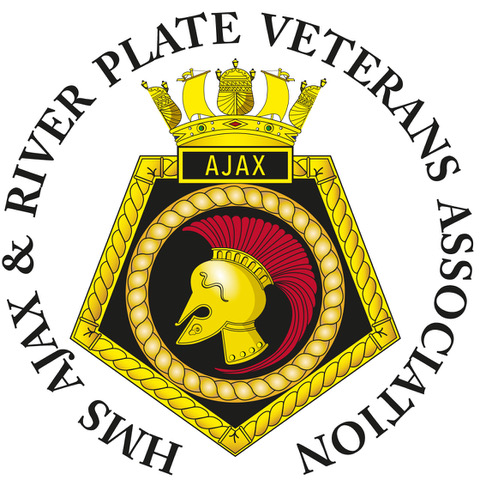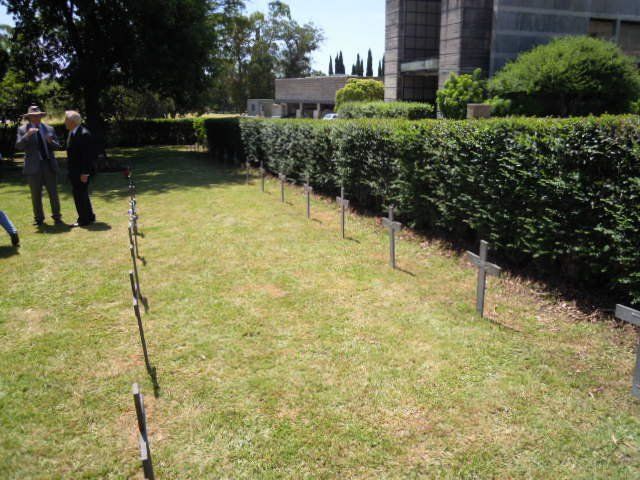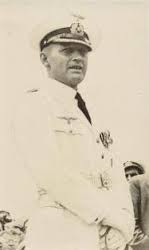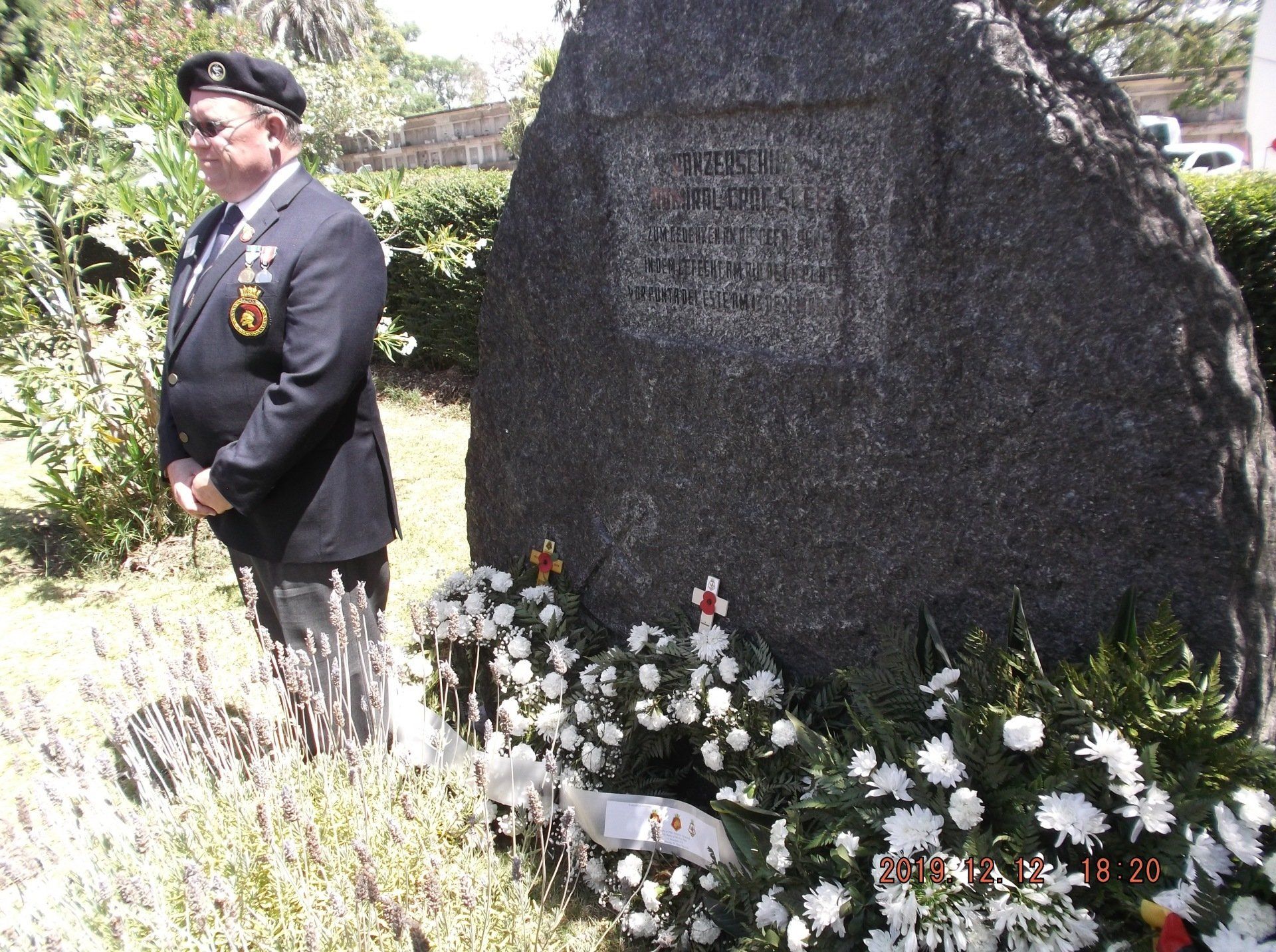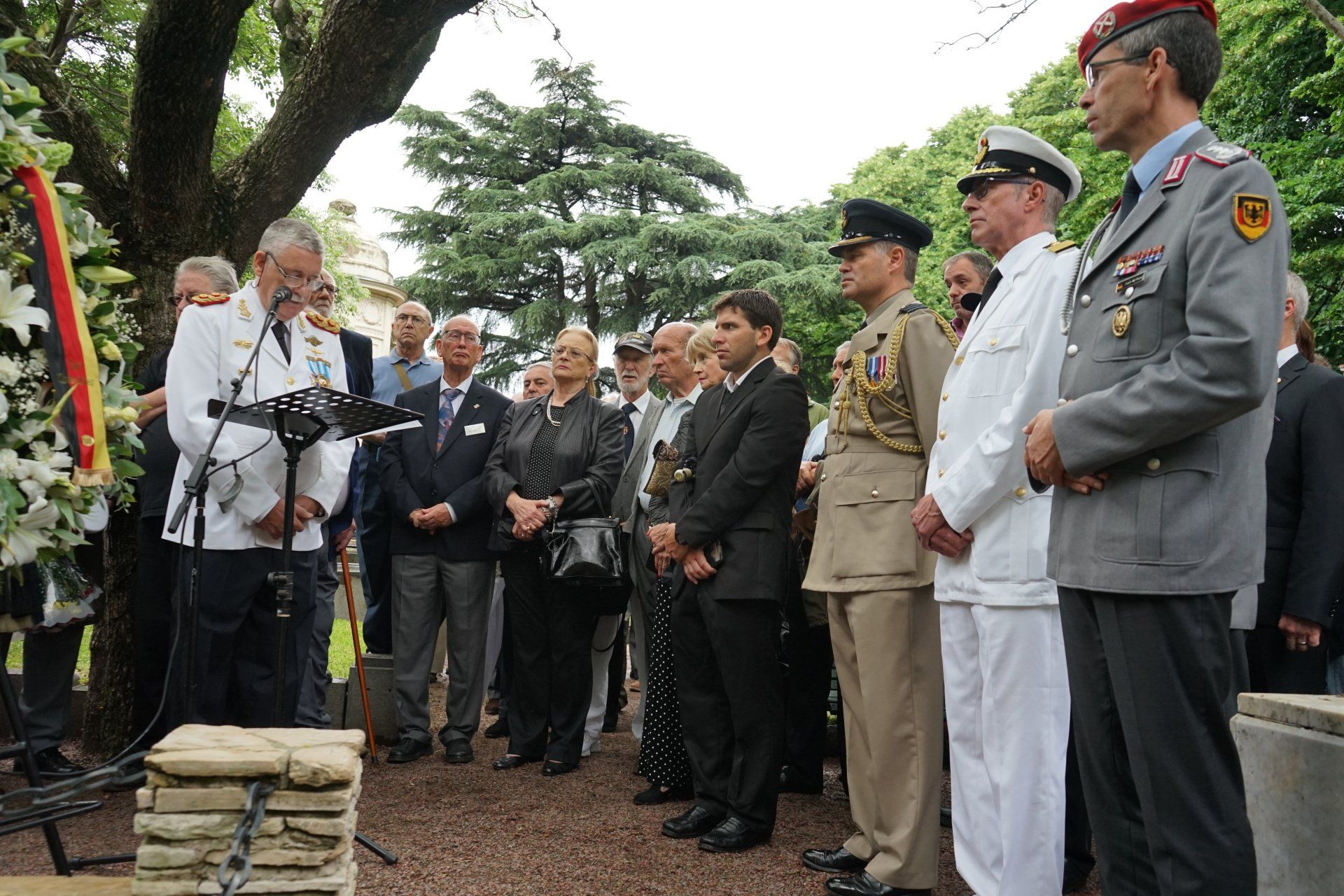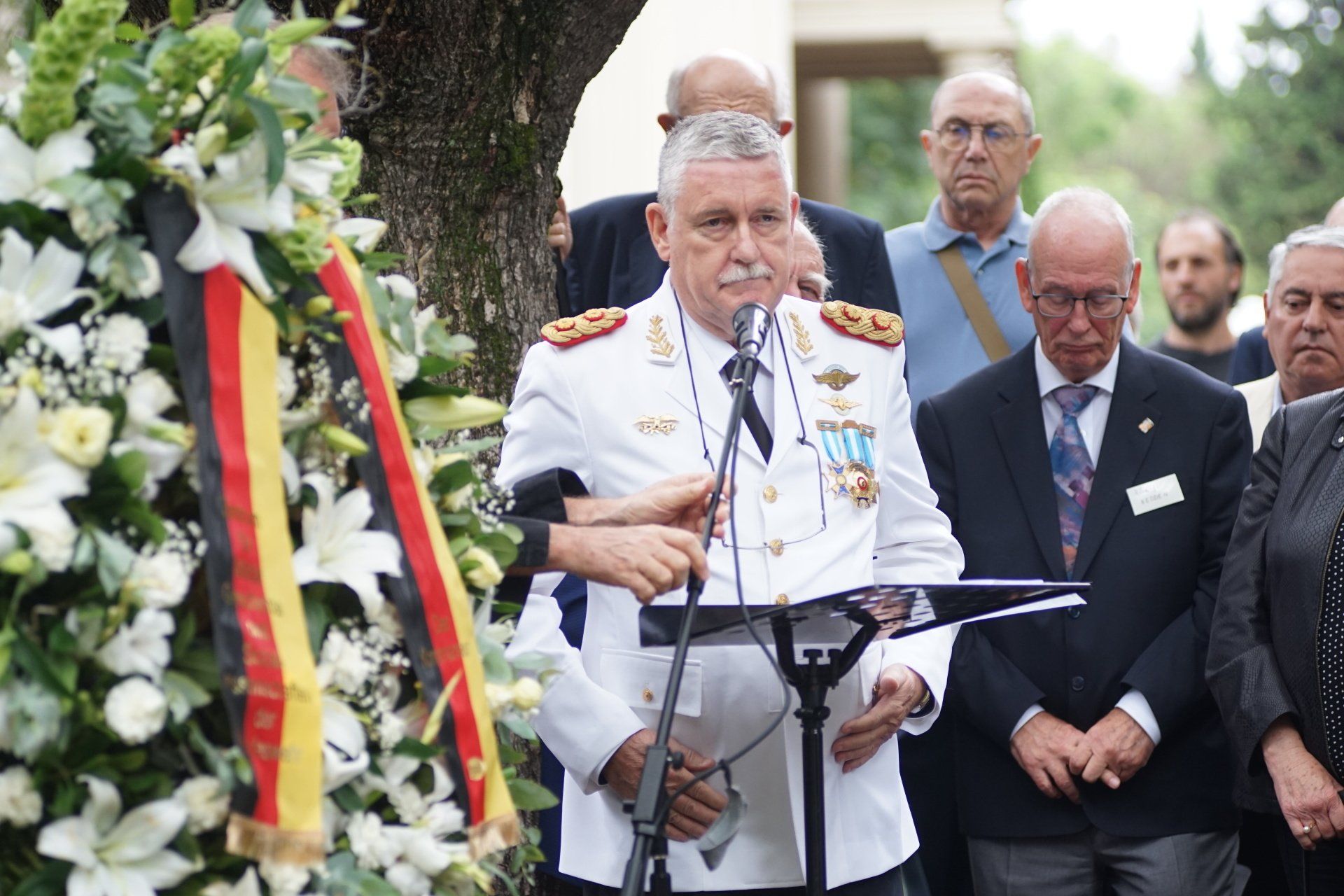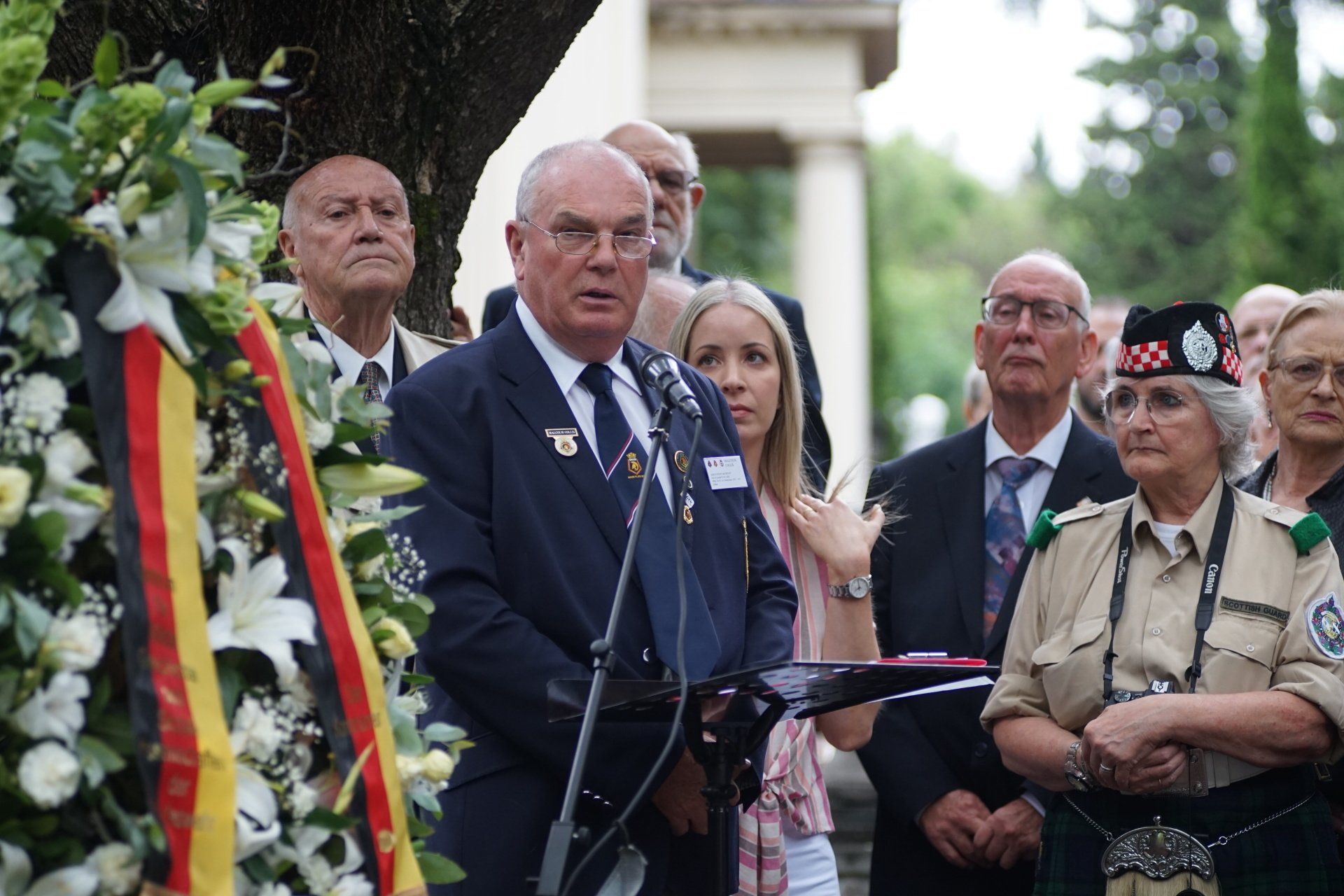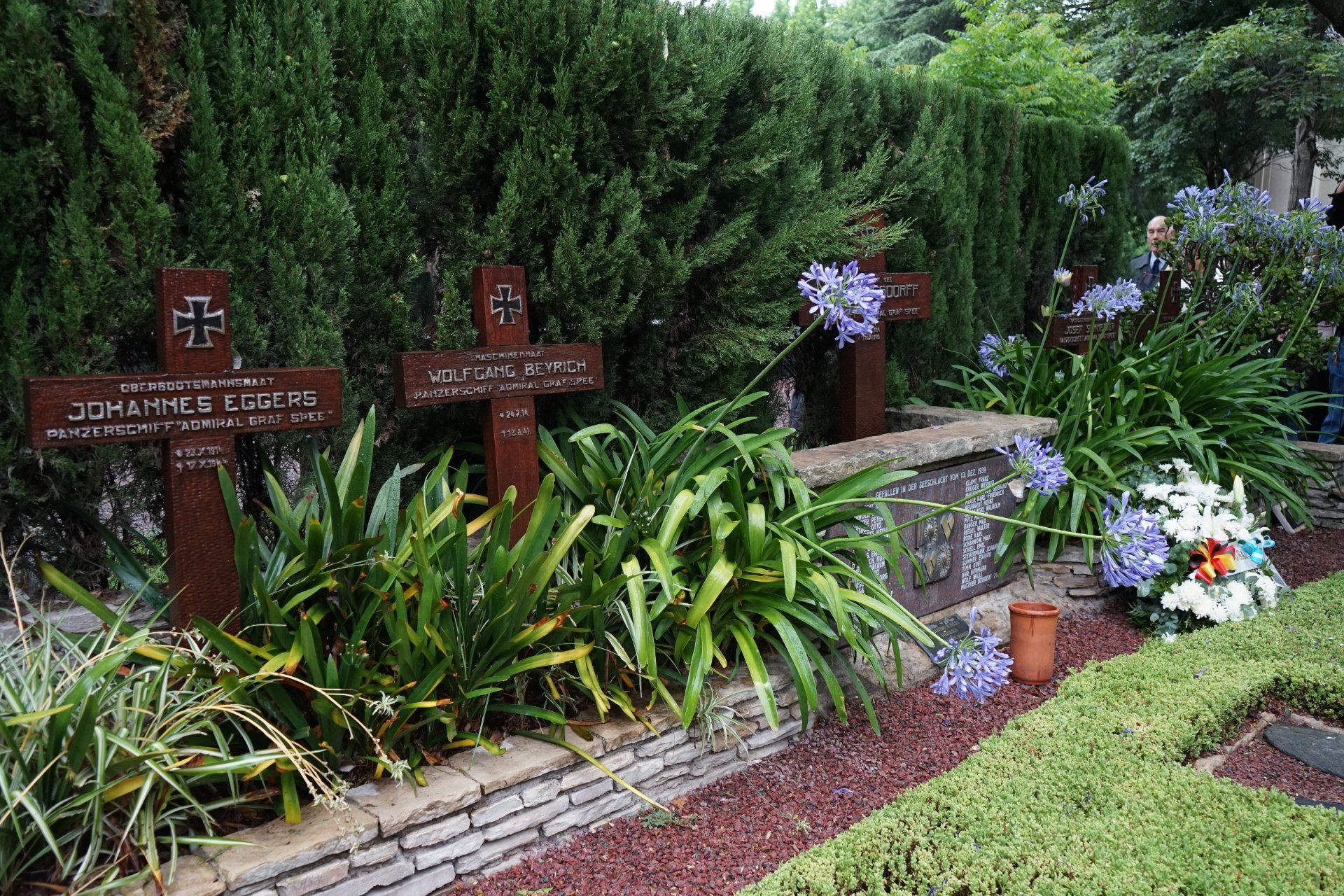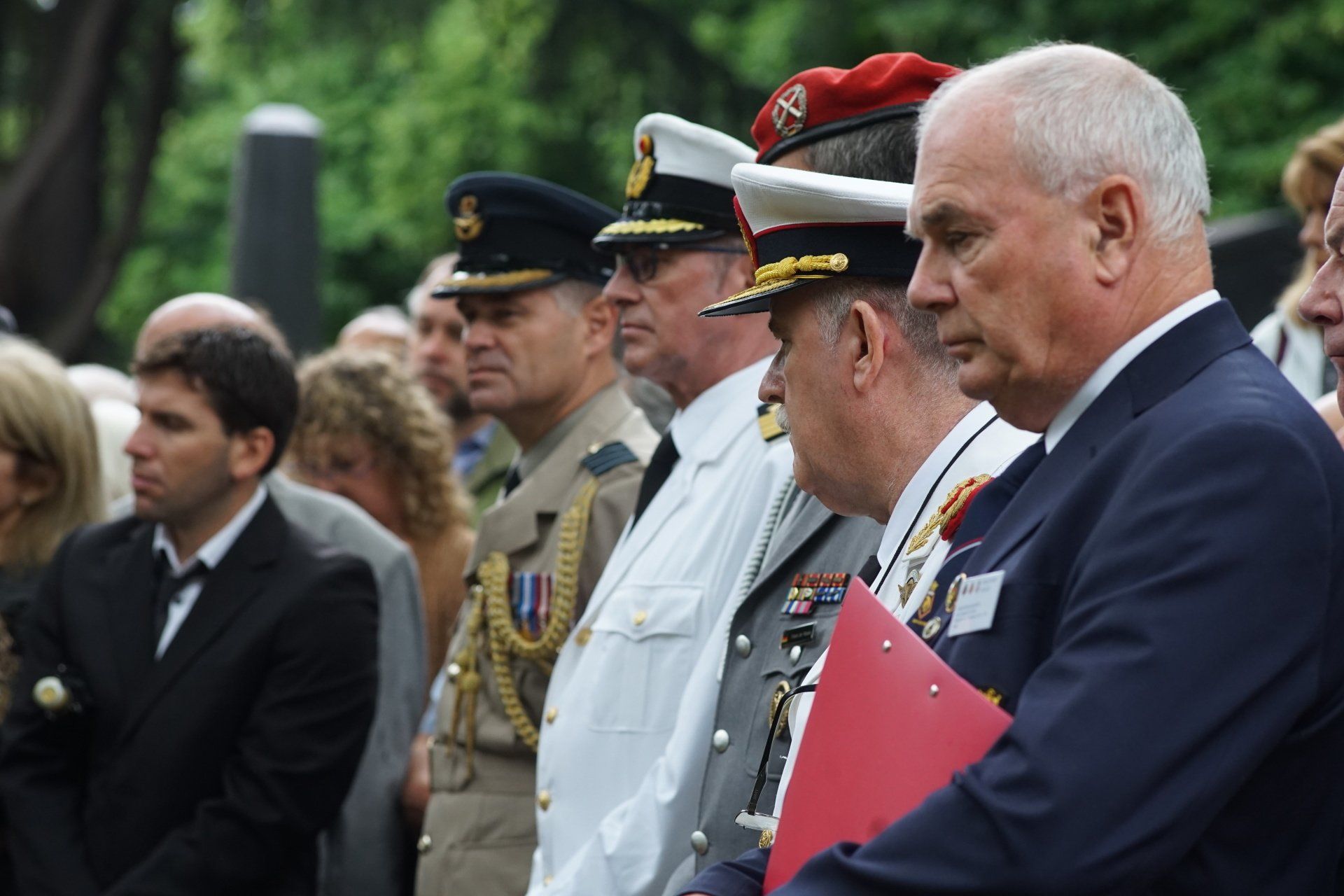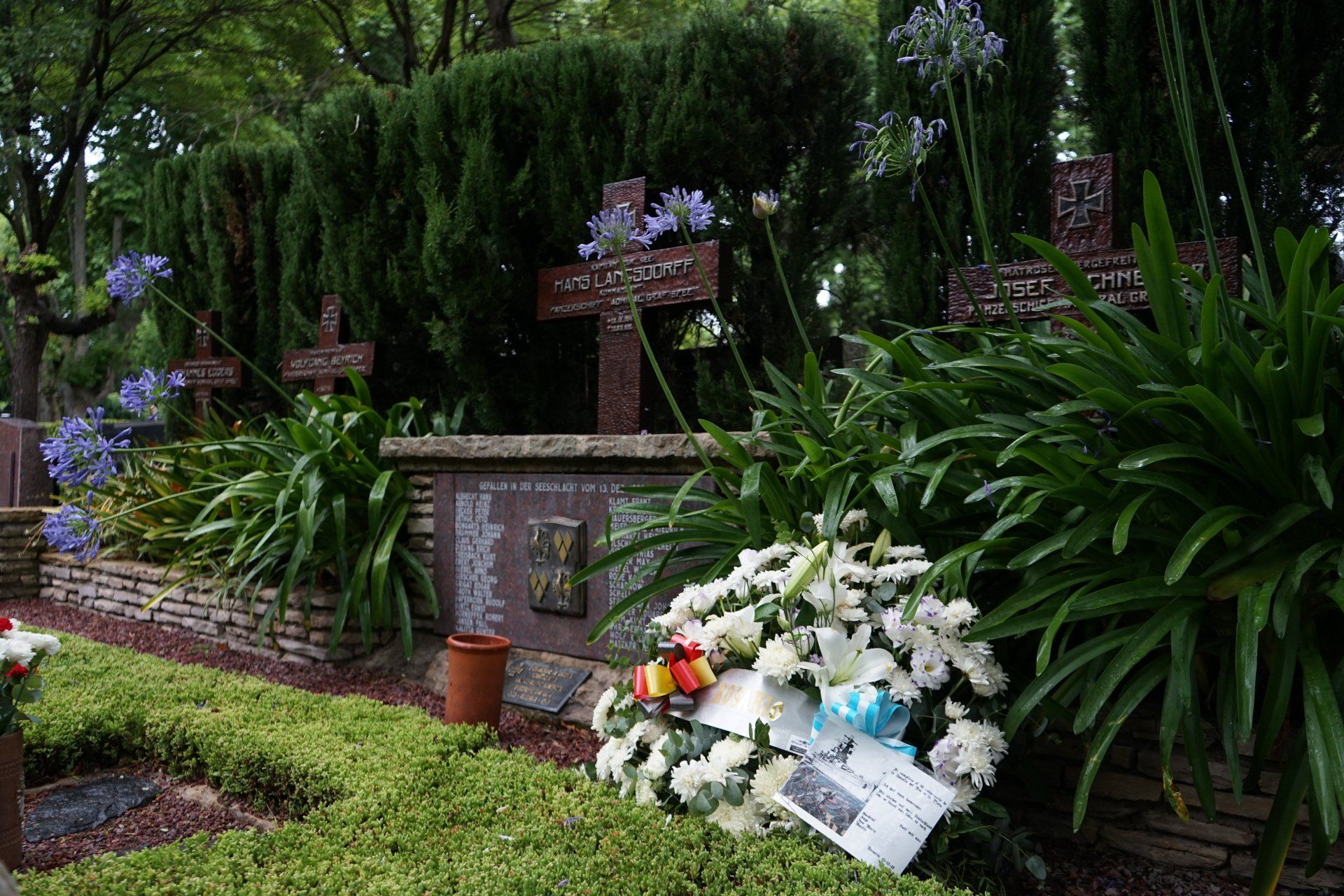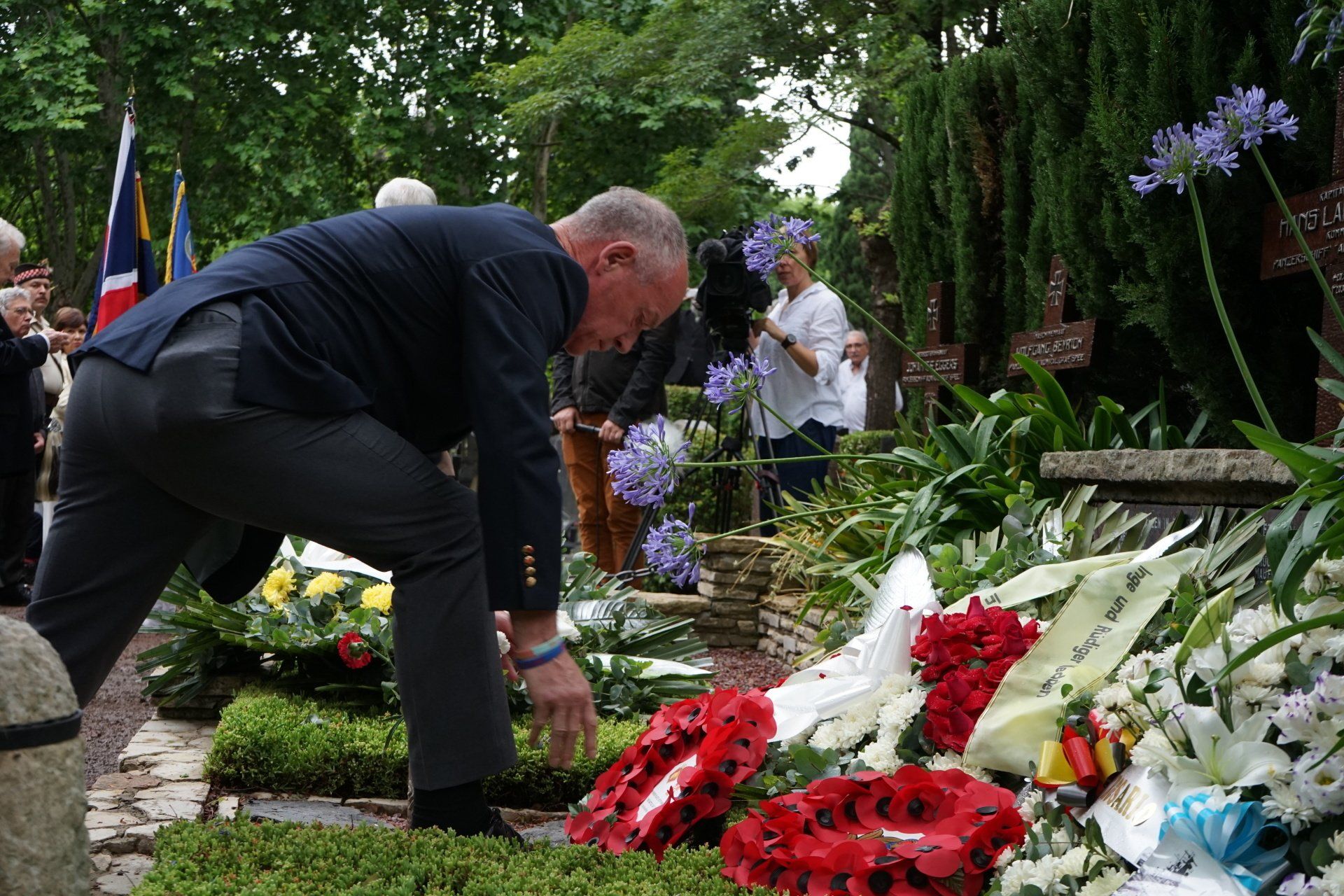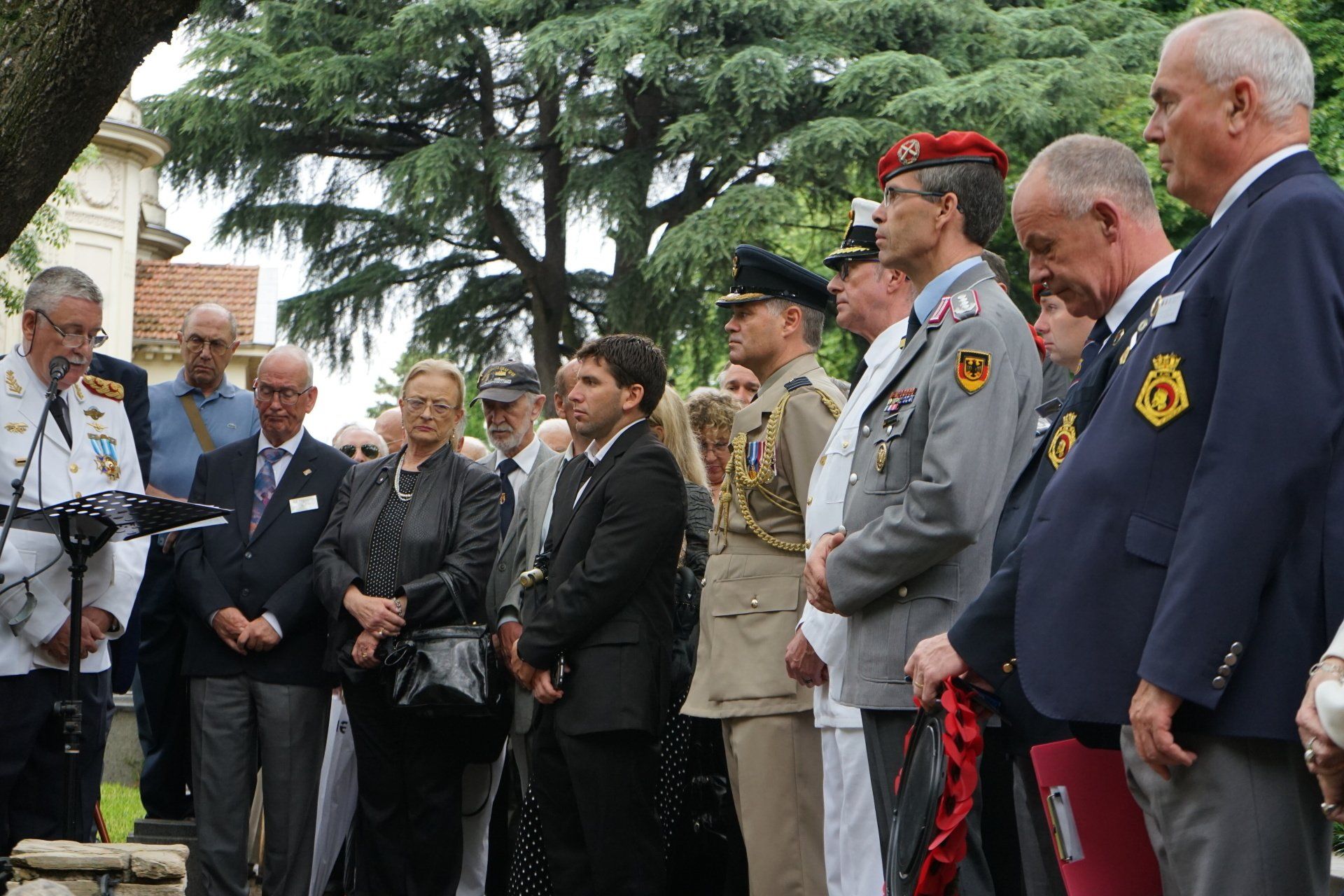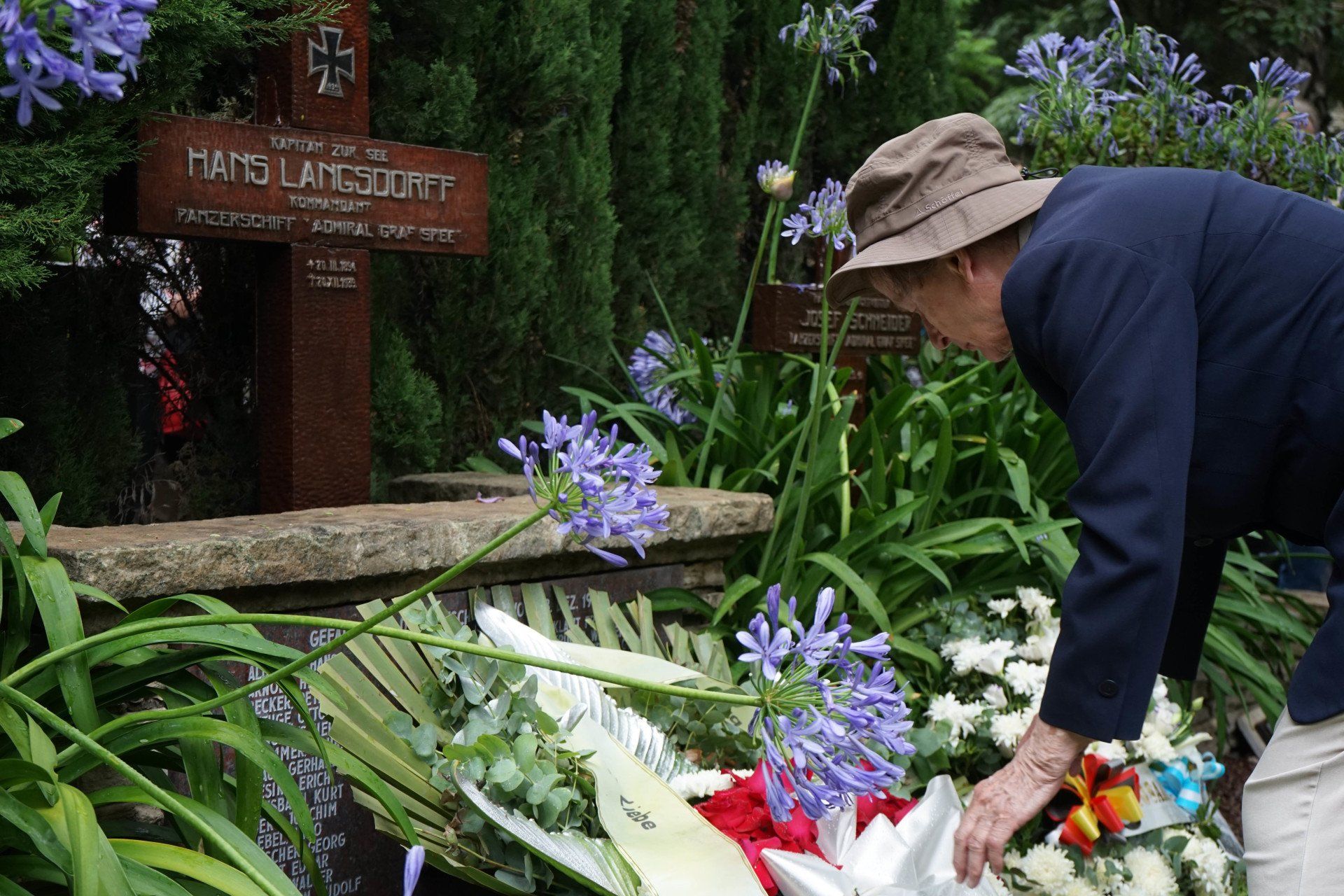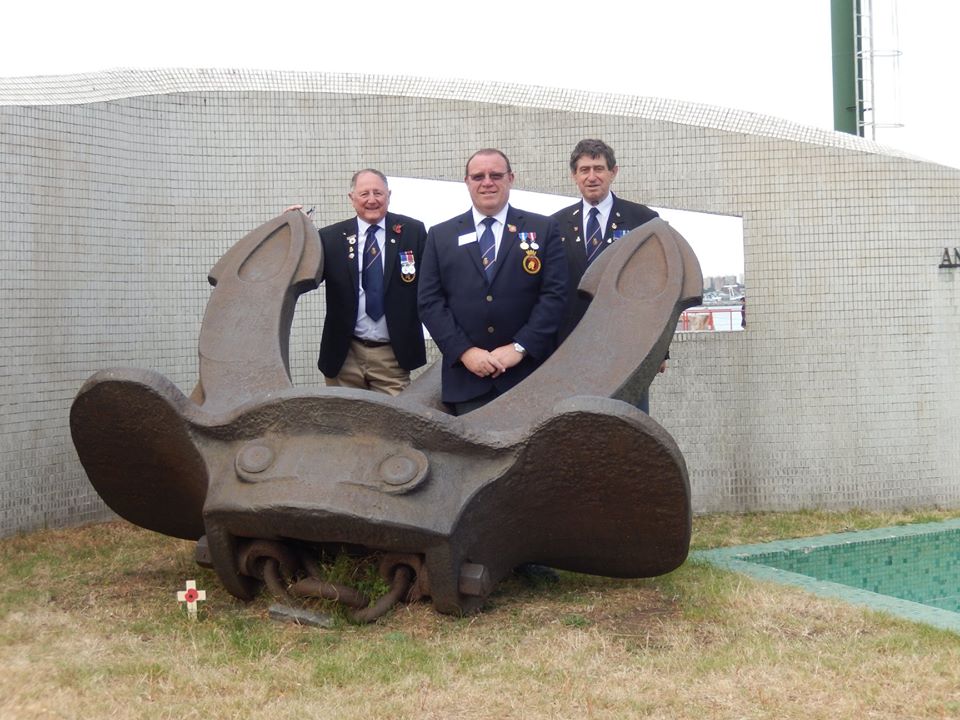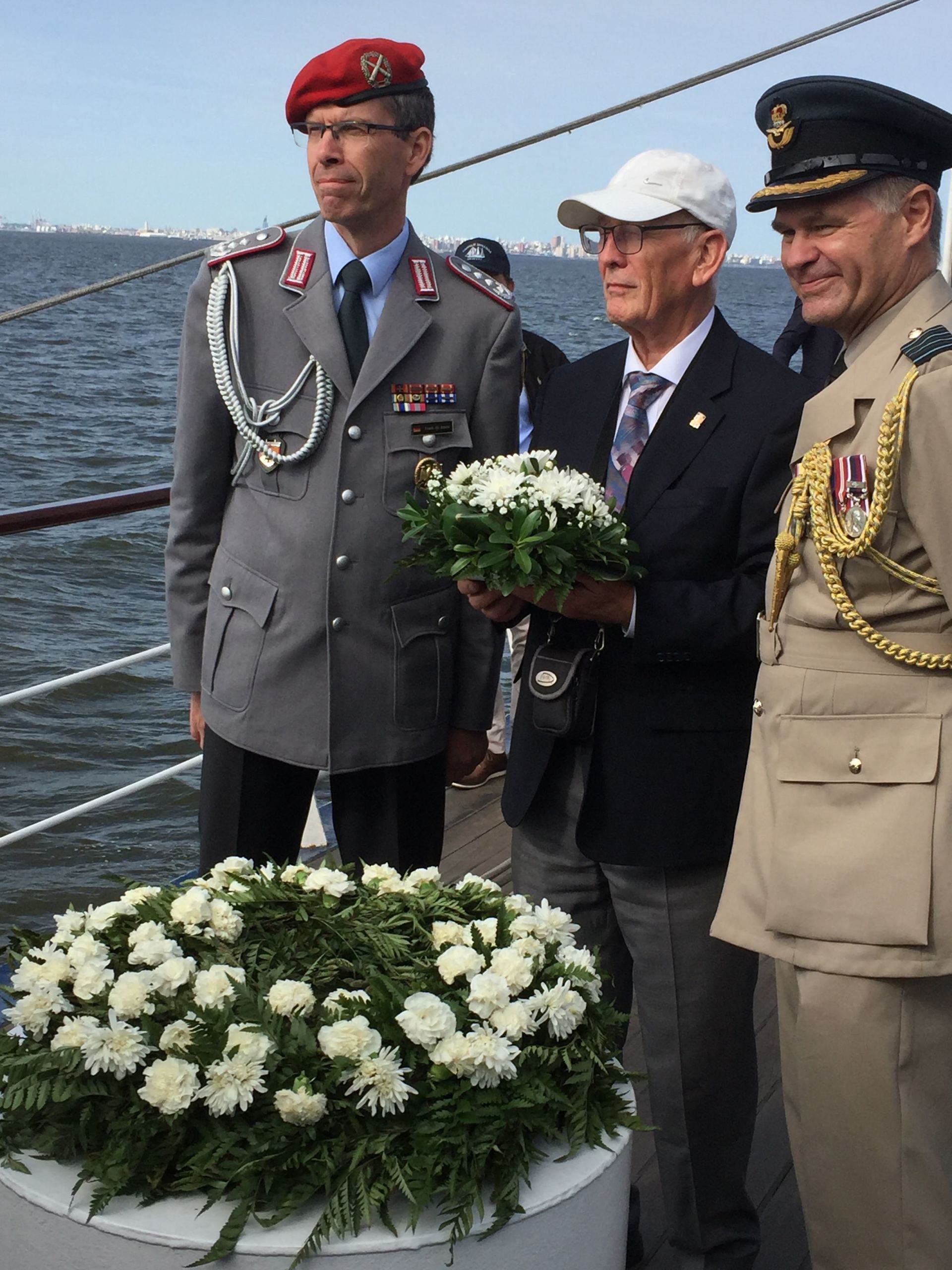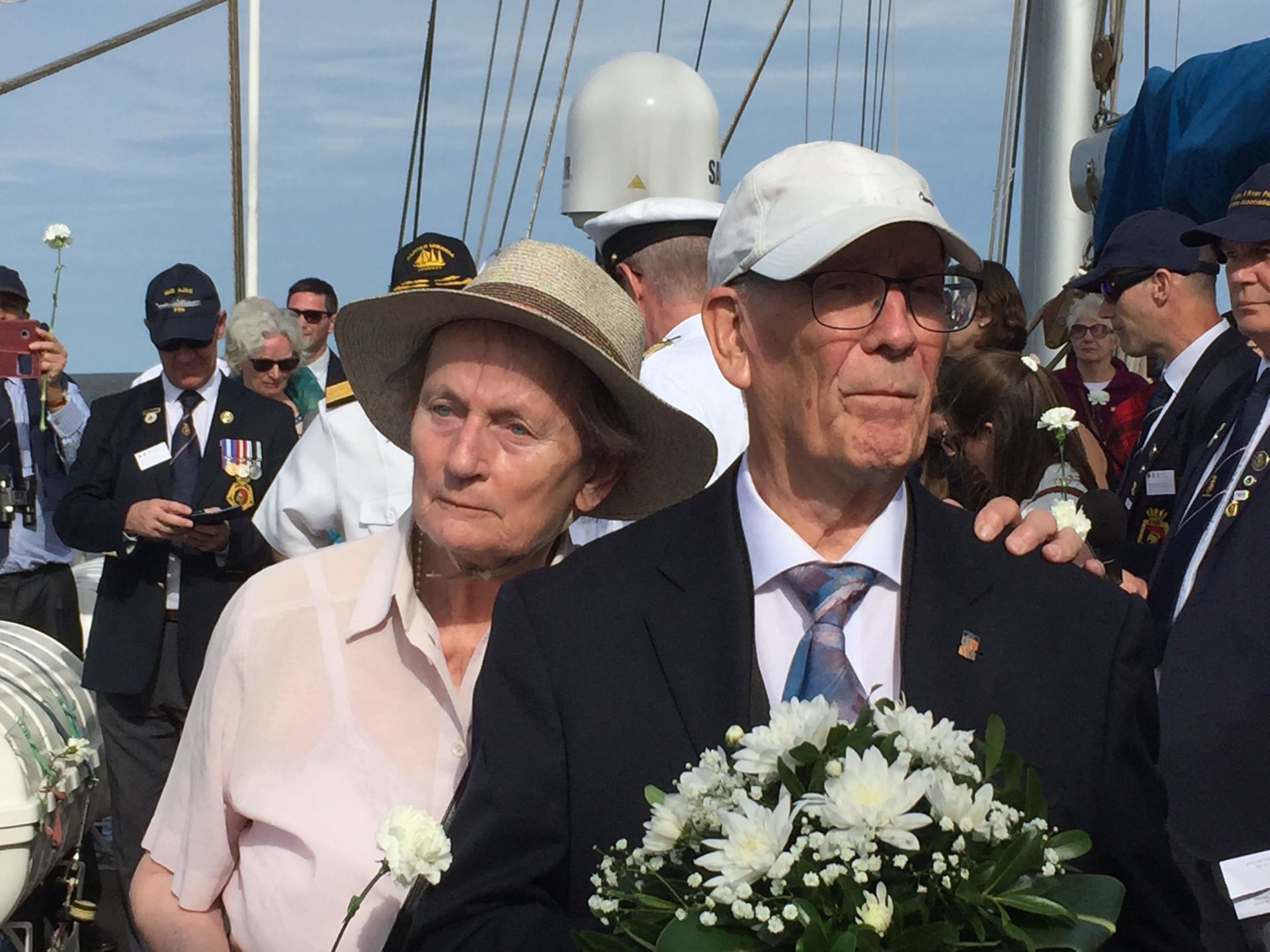Kapitän zur See Hans Langsdorff
Kapitän zur See Hans Langsdorff
Hans Wilhelm Langsdorff was born 20 March 1894 at Bergen on Rügen Island in the Baltic Sea in the Prussian State of the Federal State of the German Empire. He was the eldest of three to Ludwig Langsdorff, a lawyer and Elizabeth, the daughter of a Lutheran Pastor.
When he was four the family moved to Düsseldorf. Following school, despite having no naval connections, he joined the Marineschule [Naval Academy] at Flensburg-Mürwick in Kiel, against family wishes. In Düsseldorf they were said to be neighbours of the family of Graf Maximilian von Spee, who was to become a German navel hero. It was he who gave his name to the ship that would forever be associated with Hans Langsdorff. It is said this may have had an influence on young Hans. At the Naval Academy he became a member of the Kaiserlichmarine [Imperial Navy] class of 1912.
He graduated in 1914 and was firstly appointed to SMS Medusa, a light cruiser, as a Fähnrich [Midshipman] and by 1915 he had been promoted to Leutnant zur See. In September of 1915 he was drafted to the newest battleship SMS Grosser Kurfürst as Flag Lieutenant to the captain, his undoubted talents already acknowledged.
It was aboard the Grosser Kurfürst that he saw action at the Battle of Jutland [31 May – 1 June 1916] and was awarded the Iron Cross 2nd Class. He spent the rest of the war commanding minesweepers and at some stage was awarded the Iron Cross 1st Class.
Langsdorff was retained despite severe cutbacks in numbers under the Treaty of Versailles after the war and in 1922 he was promoted to Oberleutnant zur See and whilst in the Navy Office in Dresden Langsdorff met Ruth Hager and married her the following year, March 1924*
In 1925 he moved to the Defence Ministry in Berlin and in 1927 took command of a half-flotilla (4 boats) of torpedo boats. By April 1930 he was promoted to Kapitänleutnant [lieutenant commander] and the following year was recalled to Berlin as his administrative abilities were appreciated. He spent the next five years there. His request for sea duty in 1934 was turned down and instead he was appointed to the Interior Ministry.
He finally manged to leave Berlin in 1936 on being appointed Principal Staff Officer to Konteradmiral Hermann Boehm. Promoted to Captain on 1 January 1937, he was already familiar with the Admiral Graf Spee having sailed in her as part of the staff of Admiral Boehm who was flying his flag in the Graf Spee. They patrolled the Spanish waters during the Spanish Civil War and Langsdorff remained in Graf Spee even when Boehm was replaced and took part in the Naval Review for the Coronation of King George V1 at Spithead off Portsmouth in England.
He took over command of the Graf Spee on 2 October 1938 as Kaptäin zur See. He took his ship on an Atlantic cruise 10 to 24 November 1938 and in March the following year was part of the naval force that reincorporated Memel into the German Reich. [Memel under the Treaty of Versailles ended up in the hands of Lithuania but was forcibly returned to Germany 22 March 1939]
Large scale naval exercises in the Atlantic saw Graf Spee once again serve as flagship when the returning Admiral Boehm flew his flag. Graf Spee, together with other ships of the fleet returned to Hamburg to welcome home the Legion Condor [a unit composed of military personnel from the air force and army of Nazi Germany, which served with the Nationalists during the Spanish Civil War of July 1936 to March 1939]
On torpedo exercises in the North Sea Langsdorff on 17 August 1939 received orders to return immediately to Wilhelmshaven. Once there Graf Spee was prepared for war.
On the evening of Monday 21 August 1939 on the Wilhelmshaven quayside stood just three figures; Frau Langsdorff with her two surviving children, 16 year old Jochem and 2 year old Inge. At 1900hrs the Graf Spee sailed and Hans Langsdorff would never see his family again.
His time in the South Atlantic is documented elsewhere.
Following the Battle of the River Plate on 13 December 1939 he made for the neutral port of Montevideo in Uruguay where he hoped to make repairs. However, he was denied the time considered sufficient to repair and would only be permitted to make her seaworthy.
The injured on Graf Spee were transferred to hospital and on the afternoon of 14 December he released the crews of the British Merchant ships.
On the 15 December the Uruguayan authorities allowed Captain Langsdorff to bring his 36 war dead ashore and they were buried in the Cementerio Del Norte in Montevideo. In full uniform Langsdorff gave the traditional naval salute whilst the civilians around him gave the Nazi salute. This act gave rise to much speculation – the fact is he gave the proper salute of the Kriegsmarine that remained until Hitler replaced it with the Nazi salute in 1944. Also in attendance we several of the British Merchant Navy Captains taken prisoner on board Graf Spee and released on arrival at Montevideo. They laid a wreath of respect with the wording “To the memory of brave men of the sea from their comrades of the British Merchant Service”
[This wording was reflected on the wreath laid by the Association in 2019]
Six officers were to stay in Uruguay, one the Senior Surgeon to tend the injured and five at the request of the German Legation hoping that they would be attached to other German Missions in South America - in fact they were interned. The German Merchant captains on board Graf Spee were left in Montevideo. Also five wireless staff were put ashore, secretly to establish a wireless intelligence station on the east coast of South America. 28 sailors were in hospital (two of whom died in the coming weeks) and four were reported as being in gaol (they may have been the officers). Later, most were transferred to the Army Garrison at Sarandi del Yi, some 180kms north of Montevideo, where they joined the prisoners of war from the Tacoma.
Believing that by now a far superior force awaited him Langsdorff knew the chances of ever getting back to Germany were impossible. To attempt to fight he way out would almost certainly seal the fate of his 1000 young crew. The waters to Buenos Aires, considered to be sympathetic to Germany, were too shallow for the Graf Spee and to be interned in Uruguay would inevitably lead to Britain learning the secrets of the Graf Spee. Scuttling was, therefore, considered by Langsdorff as his only option.
On the evening of December 17th Graf Spee weighed anchor and steamed to the south-eastward into International waters leading many in the huge crowds that had gathered on the Montevideo quayside to speculate she was about to give battle. Suddenly she altered course and headed for Buenos Aires but then came to a halt.
The crew, save 43, were transferred to the waiting Tacoma liner while those who remained made final preparations. Once they too had left a mighty series of explosions were seen and heard that saw the end of the Admiral Graf Spee.
Captain Langsdorff, who had been persuaded not to go down with his ship for the sake of his crew, ordered “Pilot, enter in the log book, Graf Spee put out of service on December 17th, 1939, at 2000hrs.”
[Ship's time]
The 1055 crew arrived at Buenos Aires where Langsdorff’s endeavoured to have them classified as shipwreck mariners rather than internees. He would never know that indeed they were to be interned and subject to police surveillance.
On the 10 April 1945 their status would change to that of prisoner of war when Argentina joined the war. Following the war, in February 1946, they were ordered to leave for Germany, many against their will having created new lives in Argentina, many now having wives and children and leaving a relatively prosperous life in Argentina for worn-torn Germany. For many it would be several years before they would return. On 16 February 1946 811 men joined 34 from Uruguay on the HMT Highland Monarch that would take them back to Germany – ironically escorted by HMS Ajax.
Being an honourable naval officer, having seen the crew safely in Argentina, he figuratively chose the age-old tradition of the ‘captain going down with his ship’
when he shot himself on 20th December laying on the German Battle Flag in his room in the Hotel de Inmigrantes, Buenos Aires.
He was buried in the La Chacarita Cemetery in Buenos Aires on 21st December with full honours.
Whilst that was the end of the man, little would he know that 80 years on, the Battle and his actions would be the subject of so many books, theories and conjecture.
*Married in March 1924 their first son Hans JOCHEN Egon Ludwig
was born 14 December 1924 and he too joined the navy but was killed in action 20 December 1944 in a Biber submarine**.
A second son
KLAUS Wilhelm Herman
was born 19 July 1929 but died in 1936 of a childhood disease. [information supplied by Inge Langsdorff]
His only daughter Inge
was born 7 July 1937. She and her husband Rüdiger Nedden joined the Association in Montevideo and Buenos Aires at the commemorations for the 80th anniversary of the Battle of the River Plate in December 2019. Both accepted honorary membership of the Association.
**Biber (Beaver - German one-man submarine)
Biber 90 is on display at the Imperial War Museum, Duxford in Cambridgeshire, England and was found sinking 49 miles to the north-east of Dover on 29th December 1944. It purports that the crewman was twenty year old Hans Langsdorff found dead inside. The Langsdorff family advise this is not the same biber as Hans Jochen Egon Ludwig Langsdorff was killed in action whilst trying to destroy the locks at the mouth of the River Schelde.
This Brief an den Bruder, letter to a brother, was written by Hans Langsdorff to his brother Reinhard shortly before his suicide. It was never delivered. The family of Hans Langsdorff have become aware of the letter that has surfaced in the internet in Argentina and they confirm the handwriting to be that of Hans Langsdorff. They have kindly translated it in to English for the Association.
